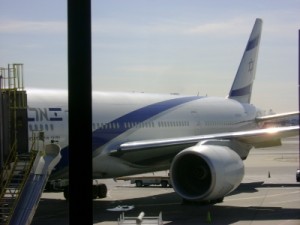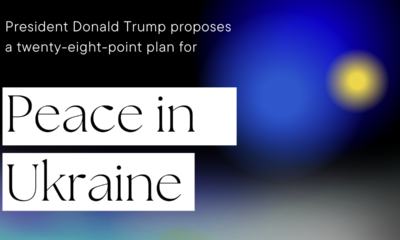Human Interest
TSA Israeli security model in America

What would a TSA Israeli security model look like? The TSA is talking about one, but might not understand the concept fully.
TSA Israeli security model discussions
The notion of a TSA Israeli security model is not new. General Robert Harding, who last year withdrew his nomination to run the Transportation Security Administration, brought it up in his confirmation hearing.
We should move even closer to an Israeli model where there’s more engagement with passengers … I would look forward to working with my 48,000 [screeners] and ensuring that their training goes even further than where we are presently in ‘engage,’ and move toward the Israeli model of training and drilling.
In fact, the former chief of security for El Al specifically volunteered to teach the TSA how El Al does things. The TSA declined.
Now John Pistole, who does run the TSA, talked about it two days ago. (See reports on Atlantic on-line and Newsmax.com.)
There’s a lot — under that Israeli model — a lot that is done that is obviously very effective.
Pistole said that the TSA would talk more with passengers. He is trying to avoid repeats of some embarrassing, infuriating, and frankly bizarre incidents in airport screening lines. Screeners have patted down little children and nonagenarian terminal cancer patients. And TSA cannot make one claim to have stopped someone from getting aboard a plane with murderous intent.
In 2002, a terrorist failed to clear security in the El Al Airlines line at Los Angeles International Airport. Frustrated, he whipped out a gun and killed two people and wounded three more before El Al agents gunned him down.
The real El Al security model

An El Al Boeing 777 waits to load before take-off. El Al Israel airlines handles its own security. The TSA now wants to copy that model. Do they even know how?. Photo: CNAV
Your editor traveled to Israel in March and April of this year, and flew El Al. El Al always warns people to show up three hours ahead of take-off. This, then, is the El Al security experience:
Going to Israel
No passenger ever sees the pre-screening that El Al (possibly with help from Tzahal intelligence) does. The actual screening begins, even in a foreign airport, when the passenger stands in line. El Al’s agents dress as civilians, but they are all Tzahal (Israel Defense Force) veterans. They ask you how you’re doing, where did you come to the airport from, what business you have in Israel, and whom you know in that country. The answers are not important. How you react to the constant (and often repetitious) questioning is. They are looking for a guilty conscience. Passengers who just want to go to Israel and play tourist, have no reason to feel defensive. Terrorists bent on mass murder and sabotage, do.
Depending on how well (or poorly) you answer their questions, the agents might ask to search your luggage. Even if not, they put all checked bags through a decompression chamber to simulate, on the ground, the lower pressures in the hold. If a bomb rigged with a barometer is going to blow up, it will blow up then.
The gate agent who takes your boarding pass as you get on board will ask you one more question: did you buy anything in the Duty Free shop in the waiting area?
Flying out of Israel
Getting out of Israel involves a more advanced screen. El Al knows that tourists buy things, and get gifts, when in-country. (They ask you about anything that anyone gave you as a gift.) So they have set up small X-ray luggage scanners, and even a search area. They search every piece of checked luggage to some degree. Their efficiency would definitely put the TSA to shame. Almost no passenger misses a flight merely on account of a delay in searching. (El Al listed your editor’s outbound flight as delayed until every passenger had cleared security. Then they listed the flight as “On Time.” And it took off on time. Draw your own conclusion.)
A TSA Israeli security model
No one knows what a TSA Israeli security model would be like, or how closely it would follow El Al’s procedure. Pistole spoke only in generalities. And the “Not Invented Here” attitude of American bureaucracies is the stuff of legend.
How would the TSA recruit its screeners? Even if they recruit veterans only, that might present a problem. The Tzahal might have legends about lax discipline. (In the Six-day War, a Tzahal army captain held up the retaking of the Old City so that he could pick up his own father and “embed” him with his troops as they captured the Western Wall.) But the Tzahal never had anyone to “frag” his or her fellow soldiers or sailors, as Nidal Hassan did in 2009, or as Naser Abdo tried to do more recently.
Would the TSA screeners know what to look for? The TSA looks for the object; El Al looks at the man or woman. Passengers have often tried to tell authorities that they have seen someone behaving oddly and suspected him of terrorism. Now, authorities don’t listen, or even accuse the passenger of creating a problem. Will that change? If the TSA Israeli security model really will look like the El Al model, that policy must stop.
But a TSA Israeli security model might be an oxymoron for another reason. El Al is an airline handling its own security. True, El Al is the national-flag carrier, and the Republic of Israel owns it. That is incidental. As an airline, El Al has impressed on passenger and bureaucrat alike that security is everyone’s business. As the heavy hand of government, TSA will have a hard sell.
Effective security needs cooperation at all levels. The one episode in which armed people got aboard an El Al flight and tried to hijack it, shows what cooperation can do. In 1970, four terrorists tried to board El Al Flight 219 in Amsterdam to divert it to Dawson’s Field. Ground-based security stopped two of them. (They managed to hijack another flight instead.) The other two got aboard. But when they made their move, the pilot threw the plane into a steep dive. When one of the terrorists tried to storm the cockpit, a passenger cracked a liquor bottle over his skull. An armed “sky marshal” shot and killed the other.
That’s cooperation. But today, the TSA only grudgingly allows pilots to carry weapons so that they could defend their cockpits.
Conclusion
Today, talk of a TSA Israeli security model is just that: talk. No one knows—yet—what it would look like, or whether it would work.
Featured image: the flag of the Republic of Israel.
Terry A. Hurlbut has been a student of politics, philosophy, and science for more than 35 years. He is a graduate of Yale College and has served as a physician-level laboratory administrator in a 250-bed community hospital. He also is a serious student of the Bible, is conversant in its two primary original languages, and has followed the creation-science movement closely since 1993.
-

 Civilization4 days ago
Civilization4 days agoDC Pipe Bomb Arrest Raises Questions About Christopher’s Wray’s FBI
-

 Civilization5 days ago
Civilization5 days agoThe Legal Logic Behind U.S. Operations Against Narco-Terrorist Networks
-

 Executive5 days ago
Executive5 days agoNewsom’s ‘National Model’ for Homeless Wracked by Fraud
-

 Executive2 days ago
Executive2 days agoWaste of the Day: Obamacare Failed Test, Approved Fraudulent Subsidies
-

 Executive4 days ago
Executive4 days agoWhen You’re in a Hole, Stop Digging
-

 Education3 days ago
Education3 days agoWaste of the Day: Taxpayers Subsidize Football Coach Severance
-

 Civilization3 days ago
Civilization3 days agoPence Calls on Trump To Fire RFK Jr Over Abortion Drug
-

 Civilization3 days ago
Civilization3 days agoRight-Wing Antisemitism, Liberalism, and Leo Strauss













Terry, you could have said “the Israelis profile.” That would have saved you about… what, three pages of text?
Protip: Profiling: it works! If it’s good for the most dangerous airport on Earth, it’s good for us all.
“In 2002, a terrorist failed to clear security in the El Al Airlines line at Los Angeles International Airport. Frustrated, he whipped out a gun”
If security had already screened and refused him, how come they didn’t find the gun?
They weren’t going to bother searching him until after they determined that they couldn’t trust him. And they’ve never missed yet.
[…] crimes to answer for, but who does also face many legitimate terrorist threats, for example, is very different than here in the US. Experts on the Israeli system laugh at the security show that takes place here. I am not […]